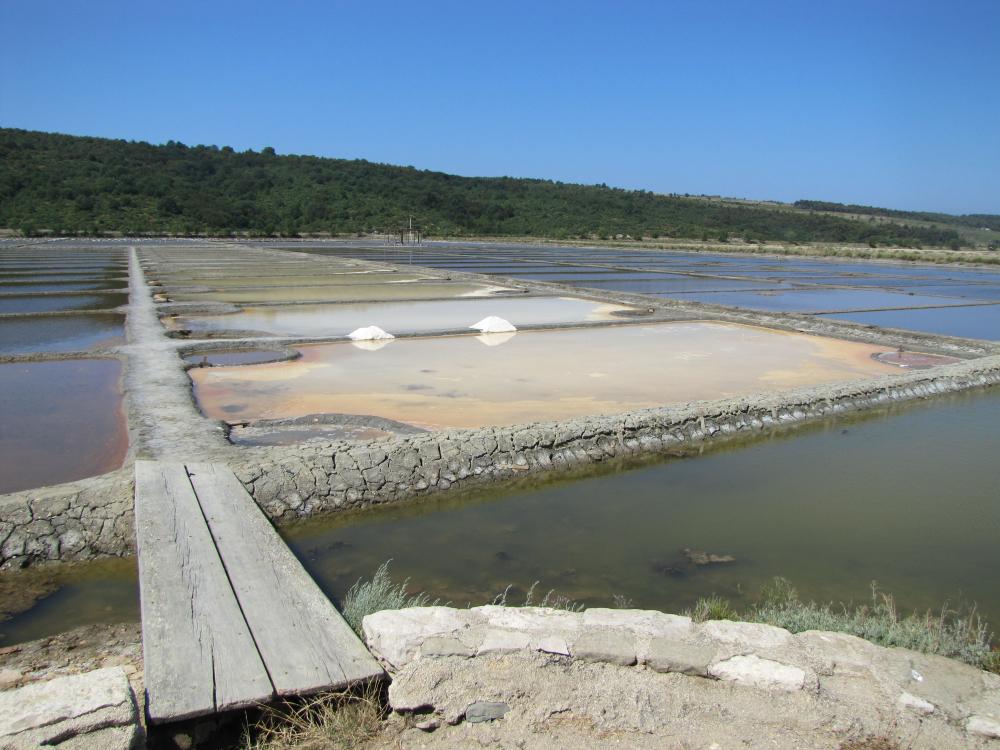Travelers driving south from the Slovenian coastal resort of Portorož may notice large, rectangular pools of seawater by the Bay of Piran.
These are the Sečovlje Saltworks. First mentioned in the early 9th century, they became an important center for salt production in the northern Adriatic.
The production of salt has always been a laborious one. In late spring, workers would come to the salt pans and would prepare the pools with a special layer of bio-sediment – a rare technique characteristic of Sečovlje. They would then open up special channels and flood the pools with water. The water would quickly evaporate under the hot sun, leaving a layer of salt behind. Next, the workers would scrape on that salt, put it in barrels, and build large mounds of salt. The salt would then be transported to various places throughout Central Europe. This would continue all summer long, and the workers typically spent the season in small stone houses next to the salt pans with their families. The production methods remained essentially unchanged for centuries.
Over the years, however, the labor intensive, manual production of salt became less and less economically justified in a world where efficiency and competition were becoming important. Many of the salt pans were abandoned, and a number of the old workers’ houses became dilapidated. The production of salt continued, but in ever decreasing scope.
In recent years, however, the Sečovlje Saltworks have seen a renaissance of sorts. A new museum is attracting visitors eager to learn more about the ancient techniques of salt production. And, for the first time in years, that production is growing. Connoisseurs and chefs around the world are increasingly demanding high quality, manually produced salt – of precisely the type traditionally preserved at Sečovlje. Despite its higher price and limited production, salt from Sečovlje is now finding its way to upscale shops and restaurants around Europe, Asia, and beyond. A chain of shops selling the gourmet, manually produced salt does brisk business throughout Slovenia.
At the beginning of every summer, workers still collect the salt and build it up in large piles, just as their predecessors have done for centuries. The saltworks are now also protected as a nature reserve, which ensures not only the protection of traditional salt production techniques, but also the rare flora and the fauna that thrives in the area.
The most recent addition to the Sečovlje Saltworks is an open-air spa, where visitors can undergo relaxation therapy and get covered in a natural mix of brine and mud known as fango. This is yet another use for the valuable substance described by the Sečovlje Saltworks as the bit of the sea that couldn’t return to the sky.


































































